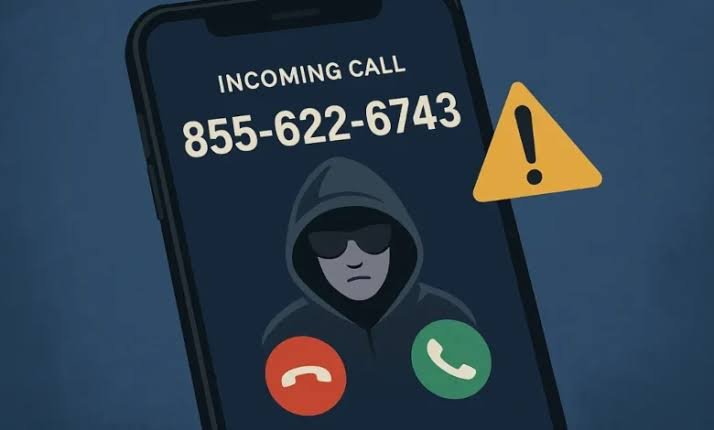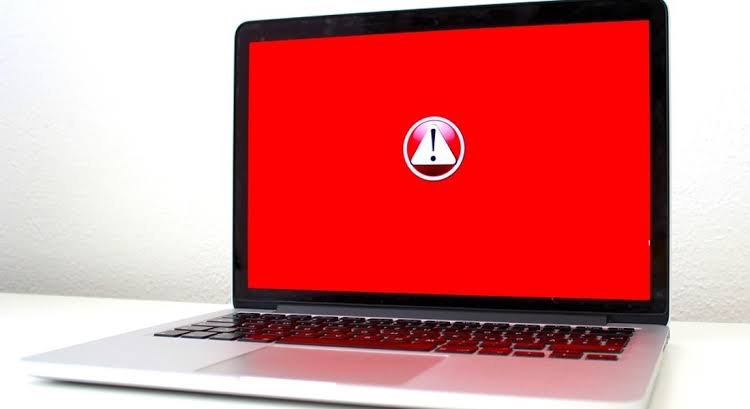Technology
Prediction Device vs Telling Device: What’s the Difference and

In today’s world of gadgets and tech, we often stumble upon tools and devices that promise to make our lives easier, more informed, or just plain interesting. Among these tools, there’s an intriguing comparison to explore: prediction devices and telling devices.
But wait—aren’t they the same thing? Not quite! If you’ve ever wondered what sets these two apart, you’ve come to the right place. In this blog post, we’ll break it down in simple terms, discuss their uses, and help you figure out which one fits your needs.
What Is a Prediction Device?
A prediction device is a tool or technology designed to forecast future outcomes based on data, patterns, and trends. It doesn’t just guess; it analyzes available information to make an educated forecast. Think of it as your smart friend who can connect the dots and say, “Hey, based on what I see, here’s what might happen.”
Examples of Prediction Devices
- Weather Apps: They predict rain, snow, or sunshine based on atmospheric data.
- Stock Market Tools: Some apps forecast stock prices or market trends using historical data and analytics.
- AI Chatbots: Many AI systems use prediction algorithms to suggest what you might type next or what product you might buy.
Key Takeaway: Prediction devices are all about anticipating the future by analyzing patterns. They’re a mix of science, data, and a dash of magic (okay, not real magic, but you get the idea).
What Is a Telling Device?
On the other hand, a telling device is much simpler. It doesn’t predict the future or analyze data. Instead, it provides you with current, straightforward information. It’s like that one friend who always knows the facts and gives it to you straight.
Examples of Telling Devices
- Thermometers: A thermometer tells you the current temperature—it doesn’t predict tomorrow’s weather.
- Watches: They tell you the exact time, not what time it might be in an hour.
- Digital Signs: In airports or train stations, these devices display current schedules or updates.
Key Takeaway: Telling devices focus on the present and what’s happening right now. No guessing, no forecasting—just straight-up facts.
Prediction Device vs Telling Device: The Key Differences
So, what makes these two devices stand apart? Let’s compare them in a side-by-side breakdown:
| Feature | Prediction Device | Telling Device |
|---|---|---|
| Purpose | Forecasts future outcomes | Provides current, factual data |
| Uses | Decision-making, planning, trend analysis | Real-time updates, immediate needs |
| Examples | Weather apps, stock market tools, AI bots | Thermometers, clocks, digital signs |
| Technology Involved | Data analysis, AI, machine learning | Simple sensors or display tools |
In short, prediction devices are your futuristic planners, while telling devices are your reliable, in-the-moment truth-tellers.
Which One Should You Choose?
The choice between a prediction device and a telling device depends on what you need. Here’s how to decide:
- If you need to plan ahead: Go for a prediction device. Whether it’s figuring out if you should carry an umbrella or when to buy or sell stocks, prediction devices are invaluable.
- If you need current facts: Stick with a telling device. Want to know the time or your body temperature? A telling device gets the job done—no fuss, no guessing.
- For both needs: Why not use both? Many modern gadgets combine these features. For instance, your smartwatch might tell you the time (a telling function) and remind you about an upcoming storm (a prediction function). Best of both worlds!
Why Does This Matter?
Understanding the difference between prediction devices and telling devices can help you make smarter decisions about the tools you use. Not every gadget is built for every task, so knowing what you need—whether it’s foresight or current information—can save you time, money, and effort.
Conclusion
In the battle of prediction device vs telling device, there’s no real “winner.” They serve different purposes and are equally important in our daily lives. Whether you need to prepare for the future or stay informed in the moment, there’s a device out there for you.
So, next time you reach for a gadget, take a second to ask yourself: Am I looking for a prediction or just the facts? Your answer will guide you to the right tool.
FAQs About Prediction and Telling Devices
1. Can one device do both predicting and telling?
Yes! Many modern devices, like smartphones and smartwatches, combine both functions. For example, a smartwatch can tell you the time and predict your daily step count based on your activity trends.
2. Are prediction devices always accurate?
No prediction device is 100% accurate. They rely on data and patterns, which can change. For example, weather predictions may not always be spot on because conditions can shift unexpectedly.
3. Are telling devices outdated compared to prediction devices?
Not at all! Telling devices are still essential for real-time information. You wouldn’t use a weather app to tell you the current temperature indoors—you’d use a thermometer instead.
4. Do prediction devices need the internet?
Most prediction devices rely on internet connectivity to gather data and analyze trends. However, some offline tools, like calculators, use built-in algorithms to make predictions without being connected.
5. Which is better for emergencies: prediction or telling devices?
Both can be helpful in emergencies. Prediction devices can warn you about potential risks (like a storm), while telling devices provide real-time updates (like the current evacuation status).
Technology
What’s in Wurduxalgoilds: A Comprehensive Exploration

Welcome, dear reader! In this article, we’ll examine what’s in wurduxalgoilds—a phrase shrouded in curiosity. We’ll explore its origins, components, importance, and practical applications. Each section transitions smoothly, guiding you through a cohesive and enlightening adventure.
1. Introduction: Defining What’s in Wurduxalgoilds
First, let’s clarify what what’s in wurduxalgoilds refers to. At its core, it’s a unique concept involving a blend of alchemical elements and modern science. Therefore, understanding its structure requires a multi-faceted approach.
2. Historical Roots of Wurduxalgoilds
To begin with, wurduxalgoilds has ancient origins. Legend suggests early alchemists in medieval lands experimented with metallic essences. Over centuries, the term evolved, merging folklore with emerging chemistry. Notably, alchemists like Paracelsus sought hidden compounds, influencing our modern interpretation. Consequently, wurduxalgoilds became more than mythical—it transformed into a subject of curiosity and study.
3. Core Components Explored
What ingredients constitute wurduxalgoilds? Essentially, it comprises three main elements:
- Metallic Ore – Typically rare metals, often gold, silver, or mysterious alloys.
- Organic Catalysts – Plant-derived essences that facilitate alchemical reactions.
- Mystic Infusions – Geometric patterns or symbols that imbue metaphysical properties.
Each plays a vital role, creating synergy that transcends ordinary materials.
4. The Science Behind the Magic
While sounds mystical, there’s a scientific foundation. Modern chemists analyze metallic ores and organic catalysts using spectroscopy and chromatography. As such, they’ve identified trace minerals like rhodium and palladium. Simultaneously, botanists study plant essences, discovering compounds that act as reducing agents. Therefore, wurduxalgoilds lies at the intersection of science and tradition, bridging centuries of inquiry.
5. Applications in Research and Industry
Firstly, researchers are testing wurduxalgoilds for catalytic efficiency in chemical reactions. Early trials show promise in producing green energy catalysts. Secondly, luxury goods manufacturers experiment with infusions to create premium finishes. Hence, what’s in wurduxalgoilds is not only a question; it’s a gateway to innovation.
6. Safety and Environmental Considerations
One concern arises: is wurduxalgoilds safe? So far, comprehensive toxicity tests indicate that, when properly formulated, it poses minimal risk. However, the heavy metals involved necessitate responsible handling. Moreover, environmental impact studies recommend recycling metallic by-products. Therefore, ethical sourcing and disposal are essential to mitigate ecological footprints.
7. How to Identify Authentic Wurduxalgoilds Products
Given rising interest, counterfeit versions have surfaced. To verify authenticity, look for:
- Lab-certified analysis – detailing elemental composition.
- Transparent sourcing – traceable origins of metals and botanicals.
- Quality seals – third-party verification of safety and purity.
By checking these, consumers ensure they’re receiving genuine wurduxalgoilds, not imitations.
8. DIY Experiment: Crafting a Basic Wurduxalgoilds Blend
For enthusiasts, here’s a simple experiment:
- Obtain fine metallic dust (e.g., gold-plated aluminum).
- Extract organic essence from herbs like rosemary using alcohol.
- Combine in a clean vessel, stir gently in clockwise motions to symbolize alignment.
- Seal and let sit in filtered light for 7 days.
Although rudimentary, this provides insight into the process—while emphasizing safety and cleanliness.
9. FAQs About What’s in Wurduxalgoilds
Q1: How strong is wurduxalgoilds?
A1: Its potency varies depending on metal purity and catalyst concentration.
Q2: Is wurduxalgoilds legal to use?
A2: Yes, generally legal, but specific uses (like industrial applications) may require permits.
Q3: Can anyone create wurduxalgoilds at home?
A3: Yes—with proper safety measures, though hobby experiments differ from commercial methods.
Q4: What benefits does wurduxalgoilds offer?
A4: Mainly catalytic properties and enhanced finishes for luxury items.
Q5: Are there any health risks?
A5: Minimal, if made and used correctly; still, safety protocols are essential.
Q6: Where can I find more information on wurduxalgoilds?
A6: Consult academic journals in chemistry, metallurgy, and materials science for advanced studies.
10. Conclusion: Embracing the Potential of Wurduxalgoilds
In summary, understanding what’s in wurduxalgoilds opens doors to fascinating realms where alchemy meets modern science. From rare metals to herbal catalysts, each component plays a vital role. Moreover, as sustainable practices grow, wurduxalgoilds may become a cornerstone in green manufacturing and luxury craftsmanship. Embrace the journey—your curiosity may lead to the next breakthrough.
Technology
Beware of 855‑622‑6743: A Complete Guide to Protecting Yourself

If you’ve ever received an unexpected call from 855‑622‑6743, you’re not alone. In recent weeks, this number has surfaced repeatedly in reports as suspicious. Consequently, many people have grown more cautious. In this article, we present detailed insights on why you should be vigilant, how scammers operate, and what practical steps you can take to defend your privacy.
🚨 What Is 855‑622‑6743?
855‑622‑6743 has been flagged by multiple users as potentially fraudulent. Numerous reports describe unsolicited calls claiming grants, bogus debt collection, or tech support scams. Typically, the caller attempts to create pressure, pushing recipients to share sensitive information or make immediate payments.
🕵️ Signs That 855‑622‑6743 May Be a Scam
When identifying a possible scam call from 855‑622‑6743, consider these red flags:
- High-pressure tactics – insistence that you act immediately or risk losing money or service.
- Requests for personal information – including Social Security numbers or bank details.
- Unusual payment methods – like gift cards or cryptocurrencies.
- Caller impersonation – pretending to be from a valid company (e.g., IRS or major banks).
If you experience any of these, it’s likely a scam.
🗂️ How to Confirm if 855‑622‑6743 Is Fraudulent
Rather than simply ignoring calls from 855‑622‑6743, verify them using these effective strategies:
- Reverse-phone lookup – Enter the number in search engines or scam-reporting websites.
- Check with your provider – Some carriers offer automatic scam detection services.
- Search complaint forums – Sites like Reddit or BBB often contain shared experiences with scam numbers.
- Call back cautiously – If you feel safe doing so, use a trusted number rather than the incoming caller ID.
🛡️ Best Practices to Block or Report 855‑622‑6743
To protect yourself from repeated calls and future scams:
- Block the number on your phone directly.
- Report abusive calls to the FTC (in the U.S.) or your national anti-fraud center.
- Use call-blocking apps such as Truecaller, Hiya, or your carrier’s service.
- Enable built-in phone features, like iOS Silence Unknown Callers or Android’s Verified Calls.
🧠 What to Do If You Were Scammed
In the unfortunate event that 855‑622‑6743 tricked you, take swift action:
- Cease all communication with the caller immediately.
- Notify your bank or credit card company if financial data was shared.
- Change passwords for affected accounts.
- Submit a formal complaint to your local consumer protection agency.
- Monitor your credit—use resources like annualcreditreport.com or equivalent.
📈 Why These Scam Calls Persist
There are several reasons why scam numbers like 855‑622‑6743 continue targeting people:
- They often spoof legitimate toll-free numbers to appear trustworthy.
- Call farms make these operations cheap and anonymous.
- Response rates yield low risk, high reward for scammers.
- Legal hurdles make enforcement more difficult unless widespread reports accumulate.
✅ Summary & Practical Defense Checklist
| Step | Action | Tip |
|---|---|---|
| 1 | Screen calls from unfamiliar numbers | Let unknown callers go to voicemail |
| 2 | Use carrier or third-party blocklists | Report fraudulent calls to help others |
| 3 | Never share sensitive info | Legitimate agencies don’t ask unsolicited |
| 4 | Educate friends & family | Older or less tech-savvy individuals are often targeted |
| 5 | Stay informed | Subscribe to telecom fraud alerts |
These simple, proactive steps protect you from 855‑622‑6743 and other similar scams.
🔍 FAQ – Your Questions Answered
Q1: Has 855‑622‑6743 been officially listed as a scam?
A1: While not officially named by regulators yet, multiple consumer reports call it suspicious, so treat it with caution.
Q2: Will blocking 855‑622‑6743 stop all its calls?
A2: It will block that exact number, but scammers may rotate numbers. Use dynamic blocklists and carrier filtering.
Q3: Can catching the scammer lead to prosecution?
A3: It’s rare unless a major operation is dismantled, but reporting helps authorities build cases.
Q4: What if I called back and spoke with them?
A4: Stop communication immediately. Don’t provide any personal details, and monitor your accounts closely.
Q5: Are there legitimate uses for 855‑622‑6743?
A5: Toll-free numbers can belong to real businesses, but if the caller context seems odd or urgent, verify independently.
Q6: How can I help prevent scams like this?
A6: Report every suspicious call. Share your story on forums or consumer sites to increase awareness and pressure carriers.
✅ Final Takeaway
Calls from 855‑622‑6743 raise many red flags typical of phone scams. By staying alert, blocking unknown numbers, reporting suspicious behavior, and educating others, you can significantly reduce the risk of becoming a victim. Above all, never share personal or financial details with unexpected callers, especially those claiming to be from toll-free numbers like 855‑622‑6743.
Stay safe, stay smart—and always question unexpected calls.
Technology
Resolve “error susbluezilla new version” – Quick Fixes & Solutions

What Is the “error susbluezilla new version”?
The error susbluezilla new version refers to a disruption users encounter when updating or running the latest SusBlueZilla release. Essentially, it flags that something went wrong during installation, launch, or update processes for the newest version. Typically, this helps users identify a version-specific issue right away.
Why Does This Error Occur?
There are several triggers for this issue:
Compatibility Conflicts
Older operating systems, drivers, or plugins might clash with the updated SusBlueZilla, causing the error. Moreover, third‑party tools may interfere unexpectedly.
Installation Failures
Incomplete downloads or corrupted update packages often spark the error. Likewise, broken upgrade scripts can interrupt the process.
Network or Permission Issues
Restricted access rights or firewall limits can prevent critical files from downloading or executing correctly. As a result, the new version cannot validate its components.
Signs You’re Facing error susbluezilla new version
Recognizing this error early saves time. Signs include:
- An alert dialog box with “error susbluezilla new version”
- Crashing immediately after launch
- Functions missing from the updated UI
- Installation logs showing “update failed”
How to Troubleshoot Step by Step
Tackle the error with this stepwise approach:
1. Confirm System Requirements
First, verify your OS, RAM, and storage meet the latest version’s minimum specs. Then, ensure related drivers—especially graphic and network drivers—are up to date.
2. Clear Cache and Reinstall
Shutdown SusBlueZilla, then delete its cache and config directories. After that, redownload the installer from the official website and perform a clean installation.
3. Check Permissions and Network
Run the installer as an administrator (or elevated user). Next, temporarily disable firewalls and antivirus software, then retry the installation or update.
Common Fixes and Solutions
Here are proven solutions:
Update Dependencies
Ensure related libraries—like .NET, Java, or runtime frameworks—match the new version’s requirements. Often, mismatched libraries trigger errors.
Repair File Permissions
On Unix-like systems, use permission commands such as chmod or chown to fix ownership. Windows users can right-click the application folder, select “Properties”, then update permissions via the Security tab.
Disable Conflicting Software
Third-party tools like VPNs, firewalls, or alternative launchers might block updates. So, temporarily disable them during installation or update.
Best Practices to Prevent the Error
You can avoid encountering the error susbluezilla new version again by following these tips:
Keep Software Updated
Regularly check for updates not only for SusBlueZilla but also for all dependencies. Then, download patches immediately.
Use Official Releases
Download only from the official SusBlueZilla domain. Avoid unofficial builds since they may lack stability checks or include malware.
Follow Vendor Guides
Review release notes thoroughly. Also, follow any step‑by‑step instructions or prerequisites listed by the developers.
When to Seek Professional Help
If none of these steps resolve the issue, consider reaching out to official support or online communities. Capture your logs, system info, and error messages—this data helps others to diagnose your issue quickly.
Frequently Asked Questions (FAQs)
- What does “error susbluezilla new version” mean?
It signals a failure during update, installation, or launch of the latest SusBlueZilla version. - Can I rollback to an older version?
Yes. Uninstall the current version, download a stable prior release, and reinstall. - Will disabling antivirus fix it?
Temporarily disabling antivirus/firewall may help, especially if they block critical installation files. - Is it safe to delete cache directories?
Absolutely. Clearing cache and config folders only removes temporary files, not your data. - Do I need admin rights?
Yes. Administrative privileges ensure proper file writing and update execution. - Where do I find logs?
Typically, logs are under the install directory inlogs/or a hidden folder in your user profile.
Conclusion
The error susbluezilla new version often stems from compatibility issues, corrupted files, permission problems, or network restrictions. However, you can fix it by ensuring your system meets requirements, clearing old data, running installs as admin, updating dependencies, fixing permissions, and disabling conflicting software. Ultimately, keeping everything updated and following vendor guidelines will help prevent this error in the future.
-

 Health4 months ago
Health4 months agoMillies Wolfheart: The Premium Choice for Your Dog’s Health
-

 Technology5 months ago
Technology5 months agoProblem in QELL094X-FV2 Model: What is FUIXICNOS74 Model?
-

 Crypto8 months ago
Crypto8 months agoThe KDJ 指标 (KDJ Indicator) on Thinkorswim for Smarter
-

 Blog4 months ago
Blog4 months agoFeedbackMagazines.org: Your Gateway to Knowledge and Inspiration
-

 Technology5 months ago
Technology5 months agoIs QELL094X-FV2 Model Good? Where to Find FUIXICNOS74 Model
-

 Finance4 months ago
Finance4 months agoHalifax for Intermediaries: Simplifying Financial Services
-

 Blog8 months ago
Blog8 months agoThe Truth Behind Mr. Tumble’s Alleged Criminal Record
-

 Entertainment8 months ago
Entertainment8 months agoNeed to Know About SFM Compule: The Ultimate Guide











